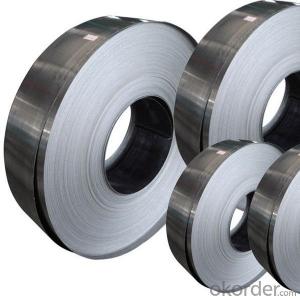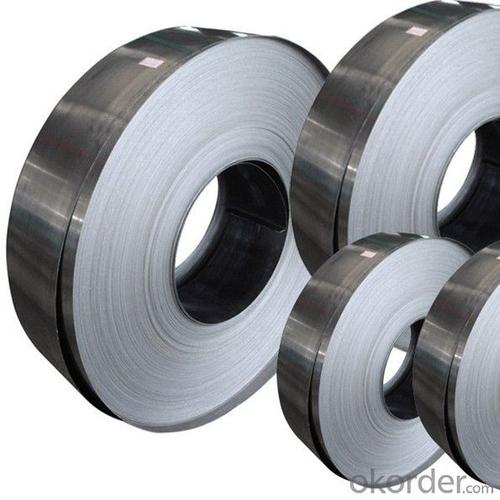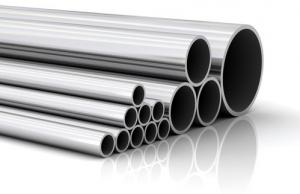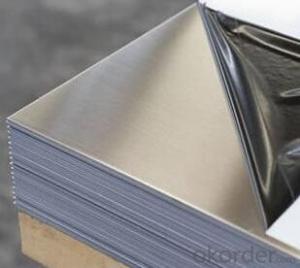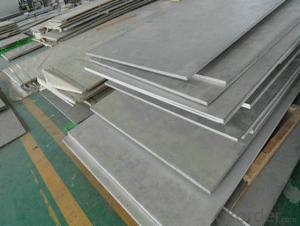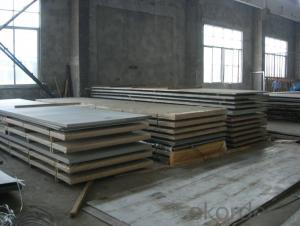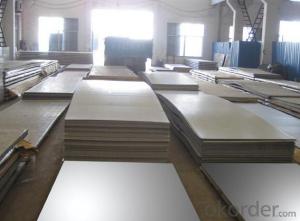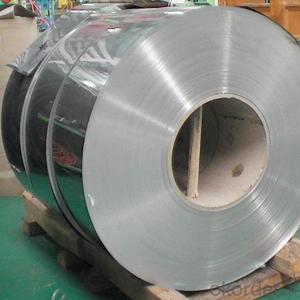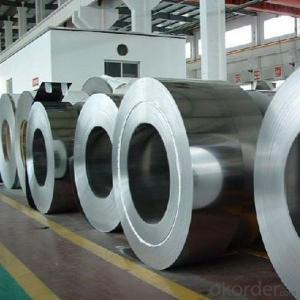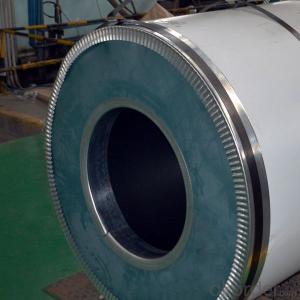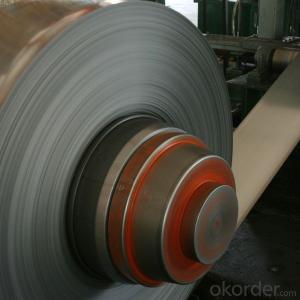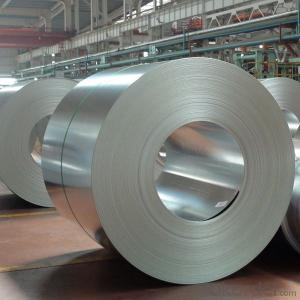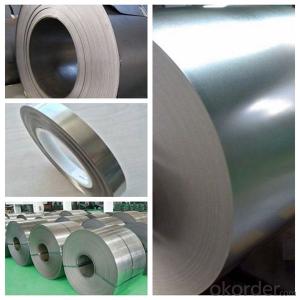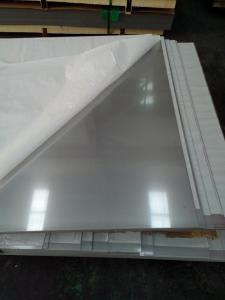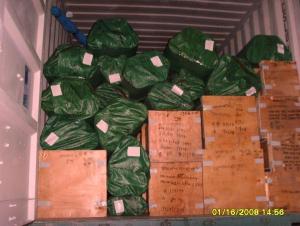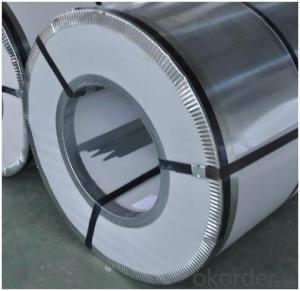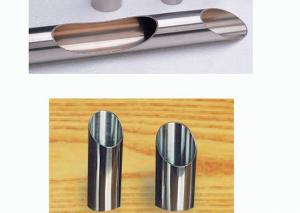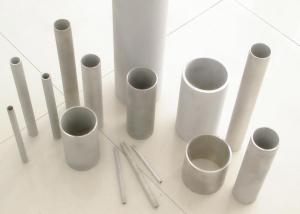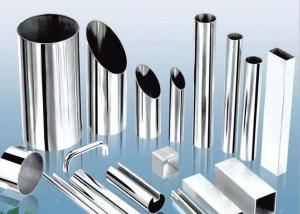Stainless Steel Coils Grade 304L NO.2B Finish 3mm Thickness Made in China Best Price
- Loading Port:
- China main port
- Payment Terms:
- TT OR LC
- Min Order Qty:
- 18 m.t.
- Supply Capability:
- 1000000 m.t./month
OKorder Service Pledge
OKorder Financial Service
You Might Also Like
Specification
Products Description
Product | stainless steel coils/plates/sheets | ||
Discharge Port | Any Port, China | ||
Size | Coils | Cold Rolled: | Thickness0.3-8mm,Width:280-2100mm |
Hot Rolled : | Thickness3-14mm,Width:650-2100mm | ||
Plates | Thickness2-80mm,Width:1500-3000mm | ||
Coil Weight | About 20 Tons | ||
Grade | 201,202,304/304L/304H,316/316L/316H,321/H,310S,409/L,430 etc. | ||
Technique | Hot Rolled/Cold Rolled | ||
Finish | 2B, BA, 2D, No1, No2, No4,NO.8,SB etc | ||
Edge | Mill Edge / Slitting Edge | ||
Package | In bundles, or as customer's requirement | ||
Place of Origin | Made in China | ||
MOQ | 20 Tons | ||
Payment Terms | 100% LC at sight,or 30%TT in advance, balance against B/L copy | ||
Delivery Time | With 30-40 days after deposit | ||
Packaging & Delivery
Packaging Detail | Standard export packing or following customer's demand |
Delivery Time | Within 30-40 days after deposit or according to the order quantity |
Detail picture of Products:
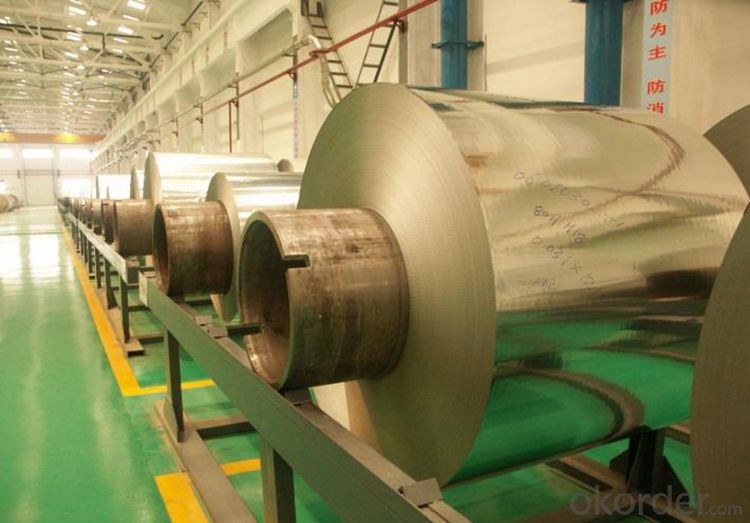
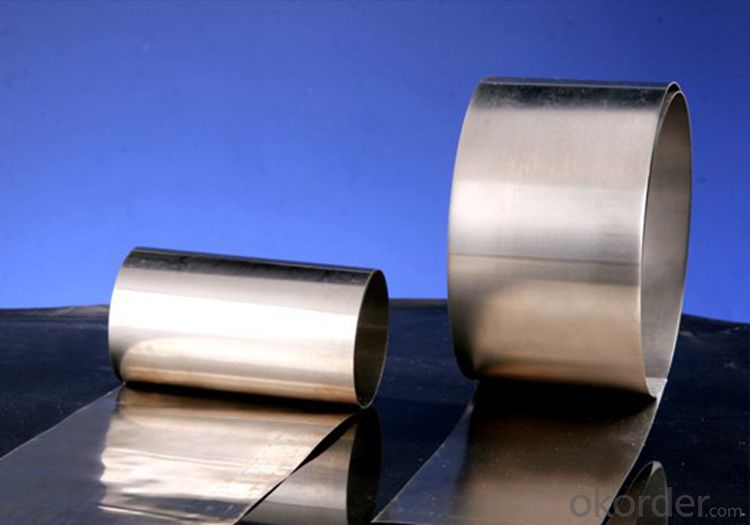
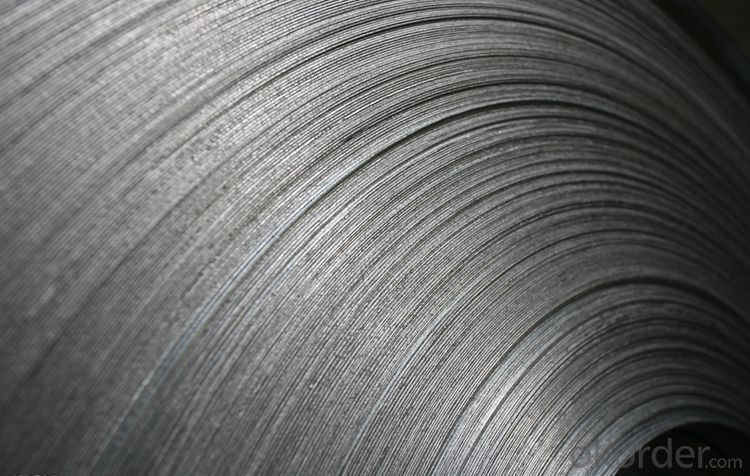
Application:
Finish | Definition | Application |
2B | Those finished, after cold rolling, by heat treatment, pickling or other equivalent treatment and lastly by cold rolling to given appropriate luster. | Medical equipment, Food industry, Construction material, Kitchen utensils. |
BA | Those processed with bright heat treatment after cold rolling. | Kitchen utensils, Electric equipment, Building construction. |
NO.3 | Those finished by polishing with No.100 to No.120 abrasives specified in JIS R6001. | Kitchen utensils, Building construction. |
NO.4 | Those finished by polishing with No.150 to No.180 abrasives specified in JIS R6001. | Kitchen utensils, Building construction, Medical equipment. |
NO.1 | The surface finished by heat treatment and pickling or processes corresponding there to after hot rolling. | Chemical tank, pipe. |


FAQ
Q: How long is the delivery time?
A: Normally 30-40 days, but mostly according to the specific requirements or the quantity
Q: Could you send me sample?
A: We can supply you with the sample for free, but the delivery charges will be covered by customers.
- Q: What are the different types of stainless steel sheet finishes for architectural applications?
- Architectural applications often utilize different types of stainless steel sheet finishes to enhance appearance and protect against corrosion and wear. 1. The most commonly used stainless steel sheet finish is No. 1, also known as "hot rolled annealed and pickled." This finish involves hot rolling the sheet, resulting in a rough, dull surface. It is then annealed and pickled to remove impurities, leaving a clean and uniform surface. 2. No. 2B Finish is achieved by cold rolling the sheet after annealing and pickling. This creates a smooth, reflective surface with a slight grainy texture. It is preferred for applications requiring high corrosion resistance and a polished appearance. 3. No. 4 Finish, also called "brushed finish," is accomplished by mechanically polishing the sheet with abrasive belts or brushes. This produces a satin-like look with fine parallel lines. No. 4 finish is commonly used for decorative purposes in architectural applications such as wall panels, elevator interiors, and column covers. 4. No. 8 Mirror Finish is achieved by mechanically polishing the sheet to create a highly reflective, mirror-like surface. It offers a bright appearance and is often used for decorative applications like wall cladding, signage, and decorative trim. 5. Bead Blasted Finish involves blasting the sheet with fine glass beads to create a textured, matte surface. This finish provides a unique aesthetic and is commonly used when a non-reflective, tactile surface is desired, such as in elevator doors, handrails, and countertops. 6. Patterned Finishes are created by embossing or etching the sheet with various patterns or textures. This adds visual interest to architectural applications, commonly used for wall panels, ceiling tiles, and decorative screens. These are just a few examples of the most commonly used stainless steel sheet finishes in architectural applications. Each finish offers distinct aesthetic and functional characteristics, allowing architects and designers to select the most suitable finish for their specific project requirements.
- Q: What are the different types of surface protection available for stainless steel sheets?
- There are several types of surface protection available for stainless steel sheets, each designed to provide varying levels of protection against corrosion, scratches, and other forms of damage. 1. Protective film: This is a commonly used surface protection method, where a thin, adhesive film is applied to the stainless steel sheet. The film acts as a barrier, protecting the surface from scratches, dirt, and other contaminants. It is typically removed after installation. 2. PVC coating: Polyvinyl chloride (PVC) coating is another popular option for surface protection. It is a thicker, more durable layer that provides excellent corrosion resistance. PVC coatings come in various colors and finishes, and can be applied to stainless steel sheets through a process called powder coating. 3. Paint coating: Similar to PVC coating, paint coating involves applying a layer of paint to the stainless steel surface. This can be done through spray painting or electrostatic coating methods. Paint coatings not only protect against corrosion but also offer aesthetic enhancements. 4. Passivation: Passivation is a chemical process that removes iron from the stainless steel surface, creating a protective oxide layer. This layer improves the corrosion resistance of the stainless steel sheet. Passivation is commonly used in industries where the stainless steel is exposed to aggressive environments. 5. Electropolishing: Electropolishing is a process that removes a thin layer of metal from the stainless steel surface, resulting in a smooth and clean finish. This process not only enhances the appearance of the stainless steel but also improves its resistance to corrosion. 6. Metal plating: Metal plating involves applying a thin layer of another metal, such as zinc or nickel, onto the stainless steel surface. This provides sacrificial protection, as the plated metal corrodes instead of the underlying stainless steel. Metal plating is commonly used in outdoor applications where the stainless steel is exposed to harsh environments. It is important to choose the appropriate type of surface protection based on the specific requirements of the stainless steel sheet. Factors such as the environment, intended use, and aesthetic preferences should be considered when selecting the most suitable surface protection method.
- Q: What is the maximum temperature stainless steel sheets can withstand?
- The maximum temperature stainless steel sheets can withstand depends on the specific grade of stainless steel. Generally, most stainless steel grades can withstand temperatures up to around 1500°F (815°C) before experiencing significant oxidation or scaling. However, certain high-temperature grades of stainless steel, such as 310 or 321, can withstand temperatures up to 2100°F (1150°C) or even higher. It is important to consider the specific application and grade of stainless steel when determining the maximum temperature it can withstand to ensure optimal performance and durability.
- Q: Can stainless steel sheets be used in swimming pool applications?
- Yes, stainless steel sheets can be used in swimming pool applications. Stainless steel is a popular choice for swimming pool construction due to its durability, resistance to corrosion, and aesthetic appeal. Stainless steel sheets can be used for various purposes in swimming pools, such as pool walls, floors, stairs, and water features. They offer excellent strength and are highly resistant to corrosion caused by chlorine and other chemicals present in pool water. Additionally, stainless steel is easy to clean and maintain, making it a practical choice for swimming pool applications.
- Q: How are stainless steel sheets manufactured?
- Stainless steel sheets go through a complex production process with multiple stages. Initially, raw materials such as iron ore, chromium, and nickel are melted in an electric arc furnace to eliminate impurities and create a molten metal. Next, the molten metal is cast into slabs or billets. These slabs undergo hot rolling, where they are passed through rollers to reduce thickness and increase length. This rolling process also refines the grain structure, resulting in a more uniform steel. After hot rolling, the steel is pickled and annealed to remove any scale or impurities and reduce internal stresses. Pickling involves immersing the steel in acid to remove surface oxide, while annealing is a heat treatment process. Following pickling and annealing, the steel undergoes cold rolling at room temperature to further reduce thickness and improve surface finish. This step also imparts desired mechanical properties to the stainless steel sheets. Once the desired thickness is achieved, the sheets are subjected to various finishing processes. These may include surface treatments like polishing, embossing, or etching to enhance appearance and texture. Additionally, cutting techniques like shearing or laser cutting can be employed to achieve the desired size. Lastly, quality control checks are conducted to ensure the sheets meet required specifications. This involves inspecting dimensions, surface finish, and mechanical properties. Once approved, the sheets are packaged and distributed to industries that utilize stainless steel. In conclusion, the manufacturing process of stainless steel sheets involves melting, casting, hot rolling, pickling, annealing, cold rolling, and finishing. This meticulous process guarantees the production of high-quality sheets with exceptional corrosion resistance, strength, and aesthetic appeal.
- Q: Can stainless steel sheets be formed into different shapes?
- Yes, stainless steel sheets can be formed into different shapes through processes such as bending, rolling, and stamping.
- Q: Are stainless steel sheets suitable for water treatment facilities?
- Yes, stainless steel sheets are highly suitable for water treatment facilities. Stainless steel is known for its corrosion resistance, which is crucial in an environment where water and chemicals are constantly present. It is resistant to rust and degradation, ensuring the longevity and durability of the sheets. Additionally, stainless steel is easy to clean and maintain, making it an ideal choice for facilities that require regular hygiene and sanitation. The material is also highly resistant to heat and extreme temperatures, ensuring its performance even in demanding conditions. Moreover, stainless steel is non-reactive, meaning it does not release harmful substances into the water during treatment processes, making it safe and reliable for water treatment applications.
- Q: What are the different types of perforated finishes available for stainless steel sheets?
- Stainless steel sheets offer a range of perforated finishes, each with its own distinct appearance and functionality. The most widely used finish is the round hole, which features evenly spaced circular perforations, providing a sleek, contemporary look. For a more simplistic yet noticeable finish, the square hole is a popular choice. Like the round hole, it has evenly spaced perforations, but in a square shape. Another option is the slotted hole finish, which offers elongated holes that can be either straight or staggered. This finish is often chosen for its decorative appeal and ability to enhance ventilation. For a visually captivating pattern, the hexagonal hole finish is an excellent choice. With its six-sided holes, it creates a modern and eye-catching design, making it ideal for architectural applications. In addition to the standard hole shapes, stainless steel sheets can also be perforated with decorative patterns. These patterns can range from floral designs to abstract shapes, allowing for a personalized and unique finish. When selecting a perforated finish for stainless steel sheets, it is crucial to consider factors such as the desired appearance, functional requirements, and the specific application. By taking these factors into account, one can choose the perfect perforated finish to meet their needs.
- Q: What's the cheapest kind of stainless steel plate? What's the model and how much is it?
- Ferritic stainless steel (with magnetic) inside 409 minimum, average price of 7800 yuan / ton, including tax, the proportion of 7.75, the formula is the same as above
- Q: Are stainless steel sheets resistant to chemicals?
- Generally, chemicals do not pose a problem for stainless steel sheets. Stainless steel is famous for its ability to resist corrosion, which is why it is widely used in industries like chemical processing, pharmaceuticals, and food processing. The presence of elements like chromium and nickel in stainless steel forms a protective layer on its surface, preventing most chemicals from penetrating. However, it's important to note that the resistance to chemicals may vary depending on the grade and composition of the stainless steel used. In highly aggressive environments or when dealing with specific chemicals, it's advisable to consult a materials engineer or refer to compatibility charts to ensure the best stainless steel grade is chosen.
Send your message to us
Stainless Steel Coils Grade 304L NO.2B Finish 3mm Thickness Made in China Best Price
- Loading Port:
- China main port
- Payment Terms:
- TT OR LC
- Min Order Qty:
- 18 m.t.
- Supply Capability:
- 1000000 m.t./month
OKorder Service Pledge
OKorder Financial Service
Similar products
Hot products
Hot Searches
Related keywords
